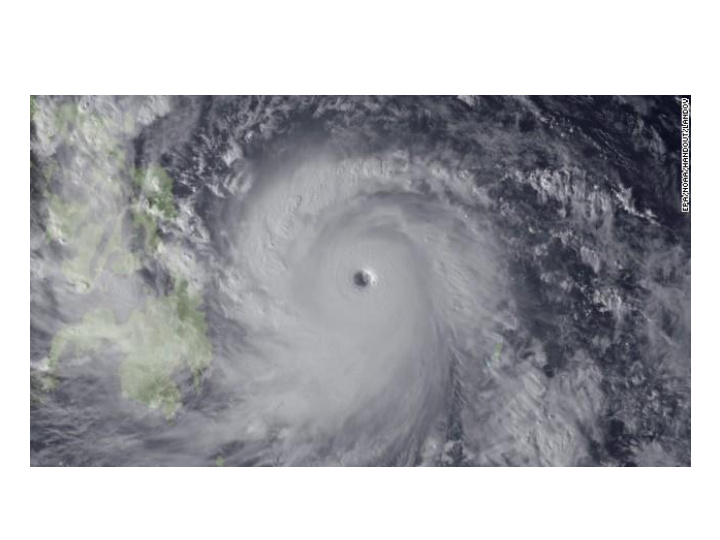



Paano ba ako Babangon? Hindi Ako , Kun ‘ di Kami. The Dispositional, Social, and Composite Enabling Factors of Filipino Resilience Prepared by: Calvin Keith M. Calvadores
Katatagan – The Filipino Resilience • Katatagang-loob roughly translates to English as “a durable core personality” – Katatagan can be defined as gaining back wellbeing and an individual’s sense of empowerment • Three phases of disaster recovery (Ladrido- Ignacio, 2011): – Impact Phase – Inventory Phase – Recovery Phase
What I wanted to find out: • To identify and understand the factors that foster resilience in Filipinos. – What are the enabling factors that underlie the coping strategies that helped Filipinos cope with and overcome the effects of natural calamity? – How do these factors contribute to resilience?
Participants Purposive Sampling – Resilient Outcome (Bonnano et al, 2007) – Low socio-economic class – Willing to share his/her experience
Enabling Factors
Dispositional Resources • The Dispositional Resources are any personality resources, beliefs, and attitudes that underlie the coping strategies that the survivors employed to counter and buffer the effects of their adverse experiences. – Problem Solving Skills (Vigilant & Resourceful) – Sense of Purpose (Persistent, Grateful, Hopeful and Future Oriented) – Faith (Positive Affirmation(bahala na) and Faithful) – Comic Nature (Cheerful and Jokes)
Social Resources • Social Resources refer to environmental and social resources that helped the survivors become resilient. These are the psychosocial supports that helped the survivors get by their day to day needs and re-establish a normal life. This came in the form of help from other people, relief operations, medical missions, and livelihood programs. – Relief Operations – Medical Missions – Livelihood Programs – Family and Friends
Composite Resources • Composite resource is a resource that comes as a personality trait but it will also not be present without the social scaffolding that would holds it. – Sense of Togetherness
Sense of Togetherness • Sense of Togetherness or Pagkahiurosa – is a waray term that means a deep sense of unity that is characterized by personal engagement of people in a group that is directed towards the welfare of everyone in the group. • Providing Support and Support Seeking
CR: Sense of Togetherness - Sympathetic nature, which means feeling that one cares and feels sad for someone who is in trouble. “It’s because I cannot do away from being sympathetic in anything – may it be a person or not. I just had to do it (to help).” (Mana Rofina, Lines #119-120) - Unselfishness, which means putting the needs of others over the self in a conscious or unconscious attempt to overcome one’s own negative experience. “ The other children that we rescued and brought here, I kept thinking what will happen to them if the water continues to rise. I had to keep them safe, and I got my strength from them.” ( Mano Ega, Lines 159-160) - Suffering together, the reassuring effect of the thought that other people also have the same situation “ Our situation were all the same. My neighbours and I were in difficult circumstances. Because of that we just helped each other, for example, when there were relief operations we made sure to announce it to our neighbours.” ( Mana Santa, Lines #168-169)
Suffering Together PAGKAHIUROSA Social Millieu Sympathetic (sense of togetherness) Unselfishness
“When she(daughter) said ‘Papa, I can’t go on anymore.’, I hugged her. I picked her up and covered her with my sweater. Then I asked ‘Can you make it now?’ she replied ‘Papa, I’m tired.’ It was because we ran from the school to the mountain and she was only 6 years old during the storm. Her neck was even hit by a rope while we were running. It was her mother who was holding her. I told her to toughen up. I told her that we were already near to where we will take shelter. Child as she was, she slowly climbed. (Interviewer: how about you? Did you feel tired?) No. I did not show to my child that I felt tired. All that I was thinking about was saving my children. I did not mind if I was tired. I did not show that I was tired or any weakness to my children because I did not want them to worry, especially my daughter. I did not even show that I was worried because she was already worried. I showed her that we can make it together. I told her that we made it out of the water. We can make it.” ( Mano Randy, Lines #97-109)
• Composite resource (Pagkahiurosa) works in a bidirectional manner. Composite resource contributes to the resilience of an individual by being a supplier of social support and outlet for the individual to be able to help others. The act of helping others gives the resilient Filipino strength and inspiration to carry on and overcome his/her circumstance
Problem Solving Skills Social Resources Sense of Purpose Comic Nature
These enabling factors made the survivors stand in and through the storm. The storm may have changed their lives but it never reduced them. The dark times that they went through served not as a barrier for their well-being; rather it became their strength as the experience made them strong. True enough, the Filipino is resilient but they become more resilient as a group. They pushed on with the little things they had – their beliefs, their attitudes, their personalities, their families and their friends – a testament to the indomitable Filipino spirit.
The End Thank you!
Recommend
More recommend